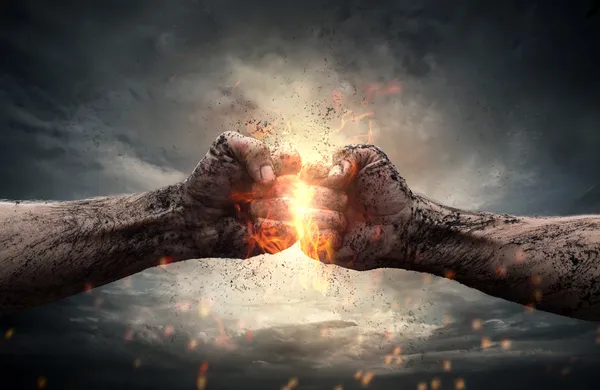People who’ve sparred a lot in combat sports or in their weapons training become good at things I call “micro-movements”, which are rarely taught and legitimately hard-to-teach. Why they’re not taught, predominantly, is because they’re different for every person and experience-driven. (Other contributing factors: the club doesn’t spar or spar often, and the instructor doesn’t know how to impart that particular info due to the previous sentence) Whatever the reason, they are instinctive and good fighters do them innately/experientially. They’re things you figure out on your own (learned, not “taught”) that are subtle and minute but can change the outcome – instinctive and innate. They’re NOT skills like “evading”, “trapping”, or “countering” but the minutiae that facilitate those skillsets. For example – foot placement/replacement, subtle weight shifts, fades, angling, feinting/feigned body commitment or vulnerability, pulls/pushes, pivots, small barely-seen body movements, the nuance used to make a thing go, all the way to feinting and baiting.

They’re NOT techniques but things learned WHILE fighting, the small elements that we discover repeatedly over time during the honing of those “tools” during testing and application against active and dynamic resistance. People who just do relatively static TMA, I’ve found personally, don’t have these and often aren’t even aware of them. Boxers, grapplers, fencers, all have them as they seldom do anything other than pound fundamentals and train pressure, AND how to fine-tune those fundamentals under pressure. Small nuances that exceptional and experienced fighters do, is what sets them apart. (We see it repeatedly in combat sports with those who excel) And when something is innate and instinctive, it’s immediately more “recallable” and accessible.
![]()
Can they be taught? Maybe, but what they´ll be doing is sharing their micro-movements to another that will then regurgitate them and perpetuate that round-hole-in-square-peg training methodology. We can show students and peers what we do so that they become aware and conscious of their own movements that make a thing work for them. Inevitably, one has to find them out for oneself as nobody can teach you what you´ll do under duress, what McGyver-like adaptations you´ll need, how you´ll react to a given stimulus, what 3-dimensional solutions you´ll come up with to 3-dimensional problems. That is up to the individual and solely the individual. No growth can occur by showing others exactly what works for you and expecting them to replicate, copy, or mirror those actions successfully on-the-fly. Some things are simply left up to the student. If taught, they´re no longer micro-movements but a taught thing that YOU´VE experienced and that they will focus on forcing into a random context.
Micro-movements, natural body-adaptations, innate evolutionary survival-skill are all examples of this and such an integral part of cultivating a student to stand on their own 2 feet and making a given system their own instead of a cookie-cutter replicant of said system and the instructor representing it. Micro-movements we described above – conscious and repetitive after success with them is ingrained (akin to heuristics and that experiential internal “rolodex”), natural body-alignment is how your body moves to a given stimulus or context instinctively – conscious but rapidly-implemented in the moment, and innate survival-skill mechanisms those things we do evolutionarily to react to an unknown input – non-conscious, like a reflex. Just a quick overview as none of these are the norm in the martial arts world, they are the exception to the rule. Most often those that do a lot of sparring, resistance, stress-training, and play are most aware and have learned on their own what works in a vast diversity of situations. Pity, as it´s hard to experience personal-growth while trying to be a clone of someone else´s by-proxy life experience.


